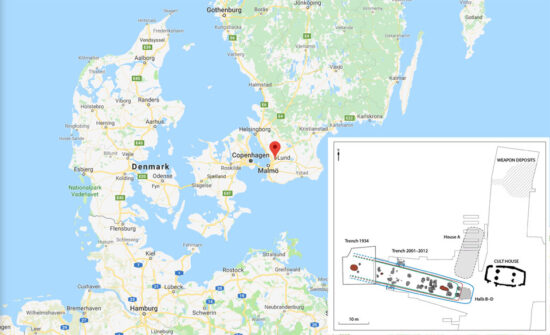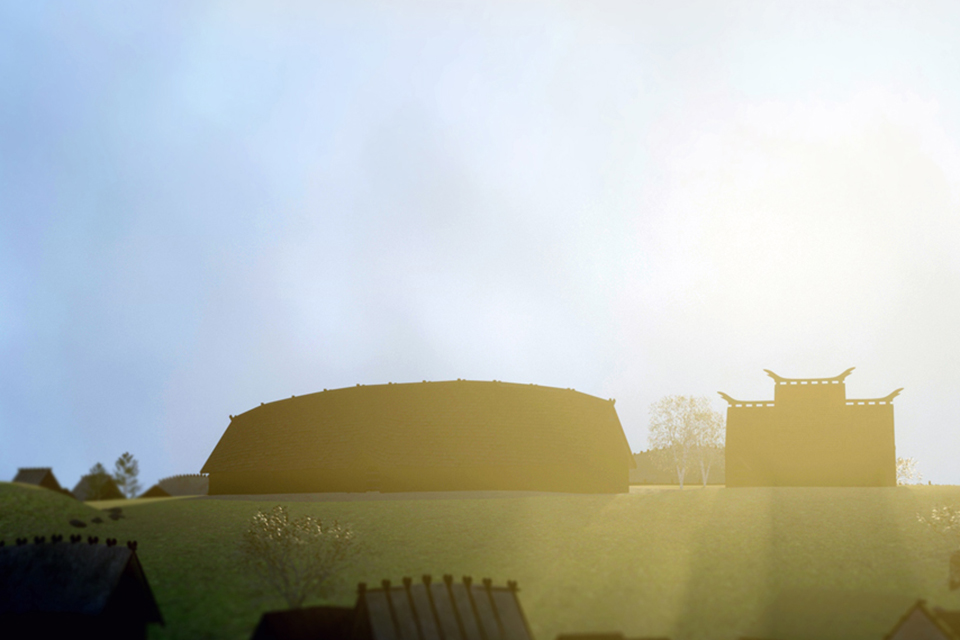Outside Lund in southern Sweden, lies the remains of a unique Iron Age settlement, Uppåkra. Known for it rich archaeological finds, much more remains to be revealed. With the help of new scientific methods, more elusive remains, such as DNA, viruses, and bacteria are expected to come to light for the first time.

With a surface of a medieval town, the settlement at Uppåkra was first established in the fertile landscape around 100 BC. In the following millennium, until the arrival of Christianity at the end of the 10th century, it functioned as a central place connecting elites throughout Europe, from the British Isles to the Black Sea, delivering a social and cultic frame for the fabric of Iron Age and Viking society.
The most prominent period fell during Late Antiquity in the 2nd and 3rd centuries. That was the starting point for a centuries-long dominance over the landscape. The importance of the place is demonstrated by the total of 28,000 finds that have been found so far.
– It is unique that the same central place was used as a chieftain’s seat during the whole millenium. Other places fell out of use around AD 500, but not so with Uppåkra. Although the society went through ecological, climatic and social crises, it resolved them and maintained its position as a powerful reginal centre, says Mats Roslund.
In a joint project, Mats Roslund, professor of Historical Archaeology at Lund University, and Torbjörn Ahlström, professor of historical osteology, wish to focus on the great mead hall next door to the cultic house – a 40-metre-long residence located at the highest elevation overlooking the Scanian plain. Here the rulers sent out invitations to hold assemblies and to feast under the scrutinising eyes of the gods from the temple ten meters away.
– We wish to dig deeper and study how society changed from the earliest Iron Age to the Viking Age and how political and religious power interacted over the centuries. The possibility is there to uncover continuities and changes in the multiple layers of this secular and sacred interplay. In addition, Uppåkra presents us with a unique opportunity to study the interplay between changes in the economy, the rituals and social cohesion, says Roslund.
Mats Roslund believes that today’s people can learn from some of the ancient life patterns and how to keep the community vibrant and successful despite crises forged by wars, climate changes and pestilences.
– Every year, an iron Age farm was involved in a struggle to make ends meet. We believe we can always get a burger from the freezer. These people might never have felt truly secure, nor sure of surviving the winter. How did they manage on the farms? Moreover, how did the chieftains or petty kings at Uppåkra manage to hold together Scania under such difficult conditions?
During the last decades, archaeologists have uncovered numerous silver coins, shards of glass, glass beads, jewellery, kitchen utensils and weapons. However, the sediment also contains stories about pandemics, bacteria, viruses and DNA from animals and humans. Perhaps the soil hides traces of the ashes from the huge volcanic eruptions between AD 536-41, which are intensively discussed when we try to measure the chaos in the 6th-century landscape and settlements.
– Archeology is facing a scientific revolution. Previously we employed scientific methods such as C14, dendrochronology and stratigraphy to date the finds, while the topsoil was sifted to find bits and pieces of the material culture. However, it appears the earth itself is a goldmine for research, says Torbjörn Ahlström.
With the help of the so-called micro-archaeological method in combination with synchrotron light in the research facility Max IV, it is hoped to be possible to identify different phases in the use of the hall building. Furthermore, environmental DNA from the sediments and DNA from bones and teeth will also make it possible to identify what was consumed and by whom during the different phases. For example, who were the guests invited to festivities at the large mead hall? From where did they travel to visit friends and foes? Or, more precisely, who sat in the hall in the deep winter of AD 463, spitting bones and spilling beer on the floor?
So far, the researchers have received SEK 20 million from Tetra Laval, SEK 10 million from the Crafoord Foundation, SEK 6 million from the LMK Foundation and SEK 3.3 million from the Thora Ohlsson Foundation. An additional 10 million was recently added to this sum, and now the researchers have received the go-ahead from Lund University’s management to go ahead with the project.
Excavations will begin in September 2022.
SOURCE:
PRESS RELEASES 2021 and 2022
Photo: Reconstruction of the Great Hall and the Temple at Uppåkra © Lund’s University
READ MORE:
